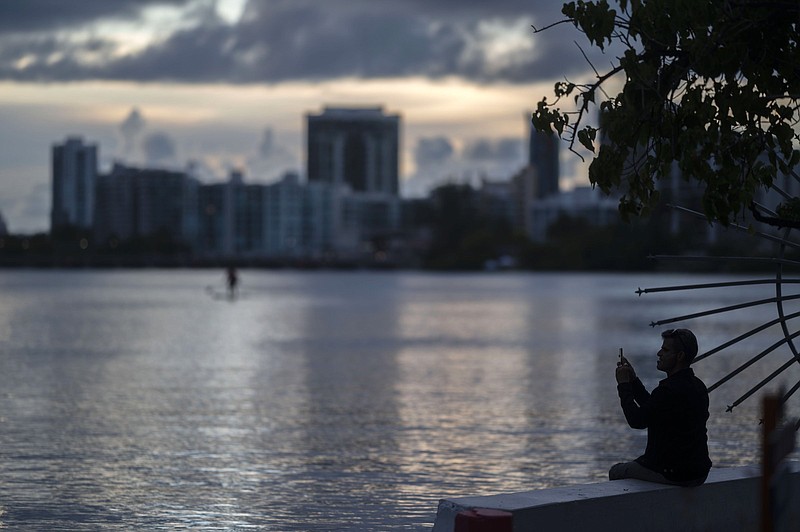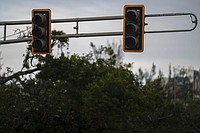SAN JUAN, Puerto Rico -- Not a single hurricane has hit Puerto Rico this year, but hundreds of thousands of people in the U.S. territory feel like they're living in the aftermath of a major storm: Students do homework by the light of dying cellphones, people who depend on insulin or respiratory therapies struggle to find power sources and the elderly are fleeing sweltering homes amid record-high temperatures.
Power failures across the island have surged in recent weeks, with some lasting several days.
Officials have blamed everything from seaweed to mechanical failures as the government calls the situation a "crass failure" that urgently needs to be fixed.
[Gallery not loading above? Click here for more photos » arkansasonline.com/104darkness/]
The daily blackouts are snarling traffic, frying costly appliances, forcing doctors to cancel appointments, causing restaurants, shopping malls and schools to temporarily close, and even prompting one university to suspend classes and another to declare a moratorium on exams.
Puerto Rico's Electric Power Authority, which is responsible for the generation of electricity, and Luma, a private company that handles transmission and distribution of power, have blamed mechanical failures at various plants involving components such as boilers and condensers -- in one recent incident, seaweed clogged filters and a narrow pipe.
It also has implemented selective blackouts in recent weeks that have affected a majority of its 1.5 million clients, saying demand is exceeding supply.
Luma took over transmission and distribution in June. Puerto Rico's governor said the company had pledged to reduce power interruptions by 30% and the length of outages by 40%.
The island's power authority has long struggled with mismanagement, corruption and, more recently, bankruptcy.
In September 2016, a fire at a power plant sparked an island-wide blackout.
A year later, Hurricane Maria hit, shredding the aging power grid and leaving some customers without power for up to a year.
Emergency repairs were done, but reconstruction work to strengthen the grid has yet to start.
"We're on the verge of a collapse," said Juan Alicea, a former executive director of the authority.
He said three main factors are to blame: Officials halted maintenance of generation units under the erroneous belief they would soon be replaced.
Scores of experienced employees have retired. And investment to replace aging infrastructure has dwindled.
Luma has reported it expects to spend $3.85 billion to revamp the transmission and distribution system and company CEO Wayne Stensby said Luma has made significant progress in stabilizing it.
He noted that crews have restarted four substations, some of which had been out of operation since Hurricane Maria.
Puerto Rico Gov. Pedro Pierluisi blamed the outages on management failures at the Electric Power Authority and called the repeated failures "untenable."
Pierluisi himself has faced calls to resign -- hundreds gathered to protest near the governor's mansion on Friday -- and many are demanding that the government cancel Luma's contract.
The president of the power authority's governing board resigned last week and a new executive director, Josue Colon, was appointed, promising to visit all generation units to pinpoint the problem.
The failures are especially aggravating because power bills have been rising. Some people have taken to banging pots at night in frustration in addition to organizing protests.
Among those planning to join is Carmen Cabrer, a 53-year-old asthmatic and diabetic. She has been unable to use her nebulizer and recently had to throw out insulin for lack of refrigeration.
"This has turned into abuse," she said of the outages. "I'm constantly tense."

